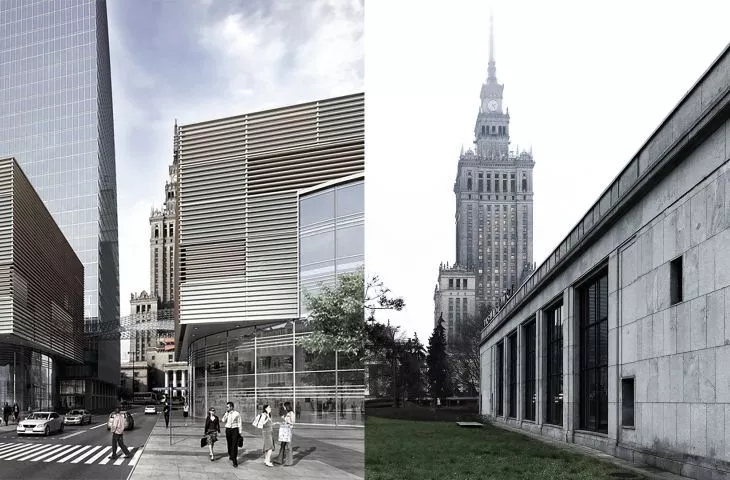No longer only Wojciech Fangor's mosaics, but the entire Warsaw Downtown station has been placed under conservation protection. The entry in the register was made by the provincial conservator on December 31, 2020. This decision crosses the plans of the city hall, which intended to demolish the stations.
photo by Kacper Kepinski
At the end of 2020, we reported that a unique set of dozens of mosaics by Wojciech Fangor, which decorate the hall of Warsaw's Downtown train station, was entered in the register of monuments. Developed by the prominent painter and graphic artist, together with Stanislaw Kucharski, Viola Damiecka and Jolanta Bieguszewska, the installations of glazed ceramic tiles introduced dynamism and color into the austere interior. Their designs, were developed in such a way that the perception of the station changes with the movement of trains and the passengers watching them from the windows. In December 2020, the Provincial Historic Preservation Officer protected 52 ceiling mosaics located above the station's three platforms, as well as 27 wall mosaics located in the halls and former waiting rooms adjacent to the side platforms, as well as in the passageways leading to the central platform.
Unique work by a group of prominent artists
photo by Kacper Kepinski
On December 31, 2020, Prof. Jakub Lewicki announced that the entire station - the two outer pavilions, the spaces of the waiting rooms and ticket office halls, as well as the platforms - will gain monument status. The Warszawa-Śródmieście railway station was built in 1954-1955 according to a design by Arseniusz Romanowicz and Piotr Szymaniak, later designers of, among others, the Central Station. Theinterior design realized almost a decade later was created at the Artistic and Research Establishments of the Academy of Fine Arts in Warsaw under the direction of Jerzy Sołtan and Zbigniew Ignatowicz. Individual parts of the concept were developed by Wojciech Fangor, Lech Tomaszewski and Boguslaw Smyrski. The result was an extremely comprehensive project, including architectural, visual arts and visual information issues.
A special circumstance is the fact that the station was a prestigious realization of the design group of the Artistic and Research Establishments, perfectly illustrating the design assumptions of the studio emphasizing the integration of the arts and the shaping of visual stimuli. At the same time, it is the only preserved in such good condition realization of the plant, most of which did not survive or underwent far-reaching transformations (Sports Center "Warszawianka", Bar "Wenecja", Department Store DUKAT in Olsztyn).
Prof. Dr. Jakub Lewicki,
Mazovian Pro vincialConservator of Monuments
Thwarted plans of the capital's planners
A fragment of the Local Spatial Development Plan with the station's pavilions marked
photo: UM Warszawa
The entry in the register of monuments of this unique establishment, however, may not please the creators and enthusiasts of the local zoning plan for the area of the Palace of Culture and Science, passed a decade ago. The document plans to set a mandatory building line along Jerozolimskie Avenue significantly set back from the entrance pavilions to the station. Such a provision would force the demolition of the buildings. This is also how the visualizations prepared by the planners look like. In place of the station, a string of lower buildings was planned, and behind them a strip with single high-rise buildings. The square in front of the Palace was to be significantly reduced in favor of designating a wide boulevard along Jerozolimskie Avenue.
Visualizations of the MPZP assumptions for the PKiN area with buildings in place of the station
Photo: Warsaw City Hall
Michal Olszewski, deputy mayor of Warsaw, responsible for, among other things, spatial planning, announced the necessity of correcting the zoning plan. The regulations for the frontage between Patelnia and Central Station are to be revised. Changing the width of the boulevard, however, may work out in favor of Jerusalem. The scaled-down wide artery in the city center could thus gain a more human scale than that planned by urban planners. However, there is time to change the plan. The development here will not be built before thecompletion of a major overhaul of the cross-city railroad tunnel. Work on the downtown section, which will also include the Warsaw Downtown station, is planned for 2024-27, during which Jerozolimskie Avenue will be dug up to undergo major modernization . There are also plans to build new train stations under the De Gaull Roundabout and move the Powiśle station closer to the Vistula River.







































